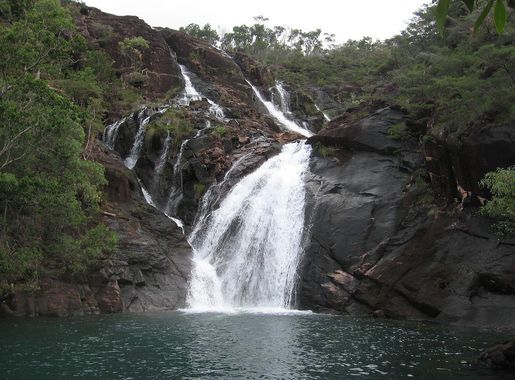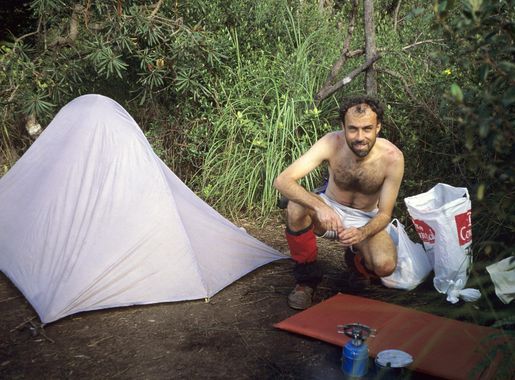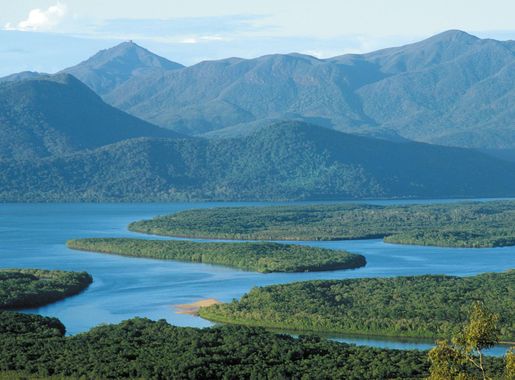
Hinchinbrook Island: Australia's Untamed Paradise
Discover Hinchinbrook Island: A pristine paradise of lush rainforests, rugged mountains, and crystal-clear waters, offering a unique blend of adventure and tranquility.
Hinchinbrook Island, located off the northeastern coast of Australia, is a pristine natural wonder that offers a unique blend of lush rainforests, rugged mountains, and crystal-clear waters. As part of the Great Barrier Reef Marine Park, the island is a haven for wildlife enthusiasts and adventure seekers. Whether you're trekking through the dense mangroves or snorkeling in the vibrant coral reefs, Hinchinbrook Island promises an unforgettable experience. The island is renowned for its breathtaking landscapes, including the iconic Thorsborne Trail, a 32-kilometer trek that meanders through diverse ecosystems. This trail showcases the island's rich biodiversity, from exotic bird species to rare plants and flowers. For those who prefer a more leisurely pace, the secluded beaches and tranquil bays offer perfect spots for relaxation and contemplation. Hinchinbrook Island is also steeped in cultural heritage, with a rich history of Indigenous Australian significance. Visitors can explore ancient rock art sites and learn about the traditional practices of the local Aboriginal communities. The island's untouched beauty and serene atmosphere make it a perfect escape from the hustle and bustle of everyday life.
Local tips in Hinchinbrook Island
- Book your ferry or water taxi in advance, especially during peak seasons.
- Carry insect repellent, as the island has a significant mosquito population.
- Wear sturdy hiking boots if you plan to trek the Thorsborne Trail.
- Pack enough food and water, as there are no shops or restaurants on the island.
- Check weather conditions before your visit, as the island can be prone to sudden changes.
Hinchinbrook Island: Australia's Untamed Paradise
Hinchinbrook Island, located off the northeastern coast of Australia, is a pristine natural wonder that offers a unique blend of lush rainforests, rugged mountains, and crystal-clear waters. As part of the Great Barrier Reef Marine Park, the island is a haven for wildlife enthusiasts and adventure seekers. Whether you're trekking through the dense mangroves or snorkeling in the vibrant coral reefs, Hinchinbrook Island promises an unforgettable experience. The island is renowned for its breathtaking landscapes, including the iconic Thorsborne Trail, a 32-kilometer trek that meanders through diverse ecosystems. This trail showcases the island's rich biodiversity, from exotic bird species to rare plants and flowers. For those who prefer a more leisurely pace, the secluded beaches and tranquil bays offer perfect spots for relaxation and contemplation. Hinchinbrook Island is also steeped in cultural heritage, with a rich history of Indigenous Australian significance. Visitors can explore ancient rock art sites and learn about the traditional practices of the local Aboriginal communities. The island's untouched beauty and serene atmosphere make it a perfect escape from the hustle and bustle of everyday life.
When is the best time to go to Hinchinbrook Island?
Iconic landmarks you can’t miss
Cardwell Jetty
Discover the tranquil beauty of Cardwell Jetty, a scenic park offering breathtaking views, fishing spots, and vibrant marine life in Queensland.
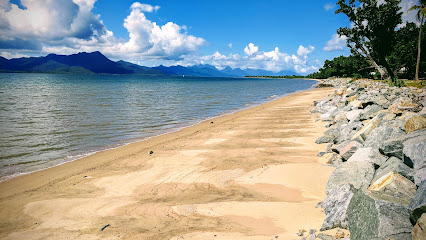
Hinchinbrook Lookout
Discover the stunning vistas of Hinchinbrook Lookout in Queensland, where nature's beauty meets serene tranquility, perfect for every nature lover.
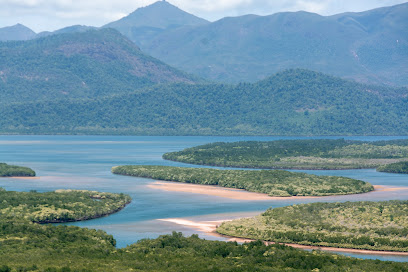
Hinchinbrook Visitor Information Centre
Explore Queensland's Hinchinbrook region at the Visitor Information Centre, your ultimate guide to nature, culture, and adventure.
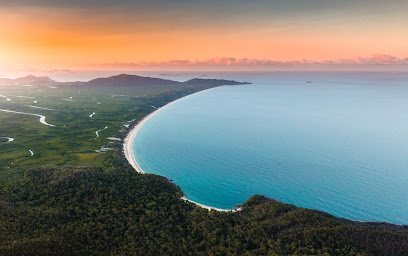
Girringun National Park
Discover the lush landscapes and rich biodiversity of Girringun National Park, a hidden gem in Queensland, Australia, perfect for nature lovers and adventurers alike.
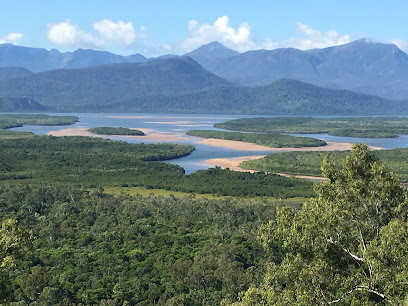
Tully Gorge National Park
Explore Tully Gorge National Park, where adventure meets breathtaking landscapes in Queensland's natural paradise.
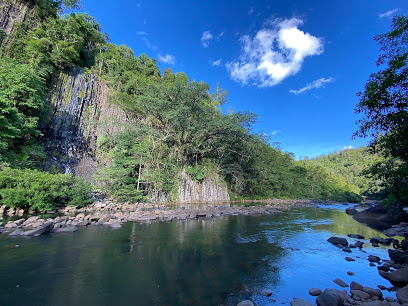
Absolute North Charters
Discover the natural beauty of Queensland with Absolute North Charters, offering unforgettable ferry services and hiking adventures in Lucinda.
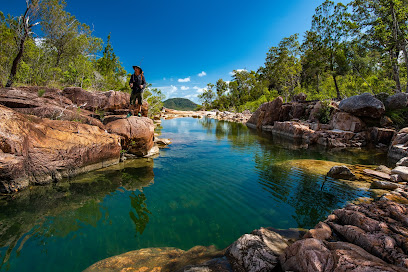
Hinchinbrook Island Cruises
Experience the breathtaking beauty of Hinchinbrook Island with unforgettable cruises that connect you to nature's wonders along Australia's stunning coastline.
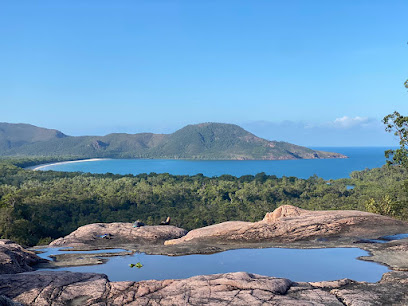
Djiru National Park
Discover the breathtaking landscapes and diverse wildlife of Djiru National Park, a pristine national park in Queensland, Australia, perfect for nature lovers and adventurers.
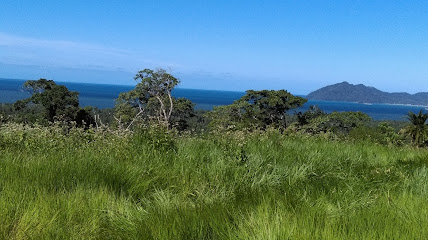
Wild Hinchinbrook Adventures
Discover breathtaking landscapes and diverse wildlife at Wild Hinchinbrook Adventures, the gateway to Queensland's natural beauty and outdoor activities.
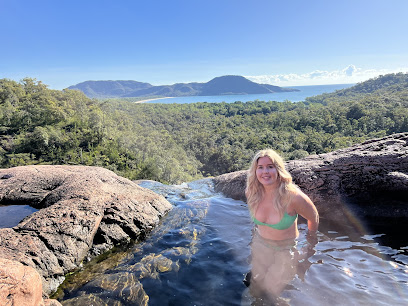
McClellands Lookout
Experience the stunning vistas and tranquil beauty of McClellands Lookout, a must-see scenic spot in Queensland offering breathtaking ocean views.
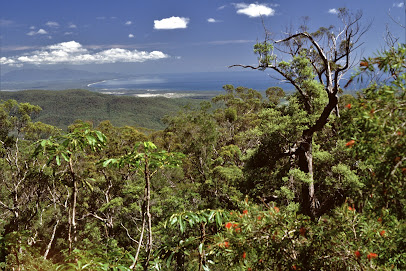
Hinchinbrook Island National Park
Explore Hinchinbrook Island National Park, where pristine nature meets adventure in one of Australia's most breathtaking landscapes.

Zoe Falls
Explore the mesmerizing Zoe Falls in Hinchinbrook, Queensland, where cascading waterfalls and lush rainforests create a serene escape for nature enthusiasts.
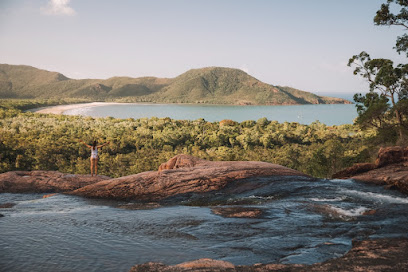
Thorsborne Trail, Hinchinbrook Island National Park
Discover the breathtaking Thorsborne Trail in Hinchinbrook Island National Park, a true paradise for hiking and nature enthusiasts in Queensland, Australia.
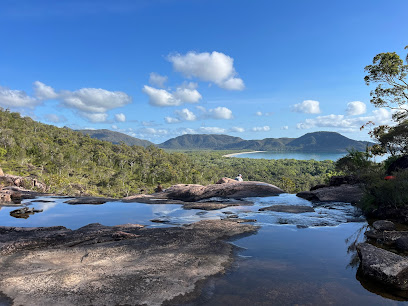
Mulligan Falls
Experience the tranquility of Mulligan Falls in Hinchinbrook, Queensland, where nature's beauty and adventure await in a serene backdrop.
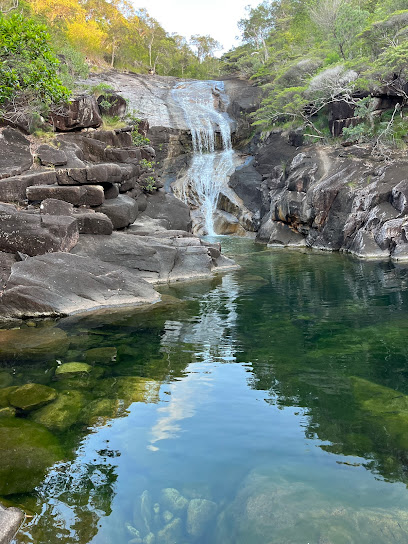
Goold Island National Park
Unveil the natural wonders of Goold Island National Park in Queensland, a serene escape into pristine landscapes and vibrant wildlife.
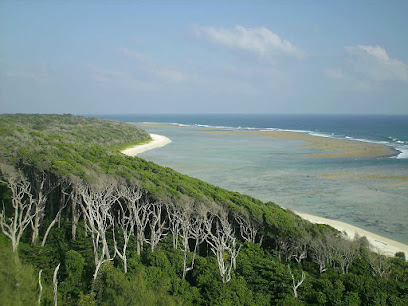
Unmissable attractions to see
Hinchinbrook Lookout
Experience breathtaking views and serene landscapes at Hinchinbrook Lookout, the scenic treasure of Queensland, perfect for nature lovers and photographers.
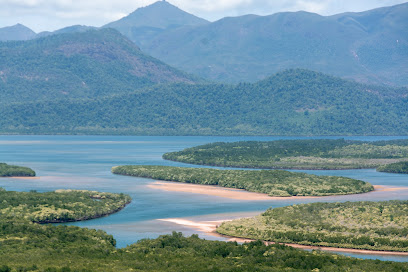
Cardwell Jetty
Discover the tranquil beauty of Cardwell Jetty, a picturesque spot in Queensland perfect for fishing, picnicking, and enjoying stunning views.
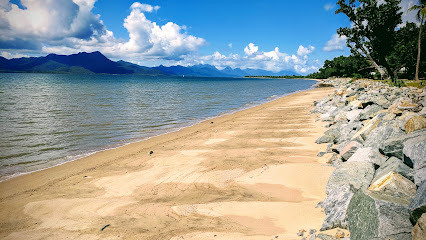
Absolute North Charters
Discover adventure and breathtaking beauty at Absolute North Charters in Lucinda, Queensland, your gateway to the Great Barrier Reef and Hinchinbrook Island.
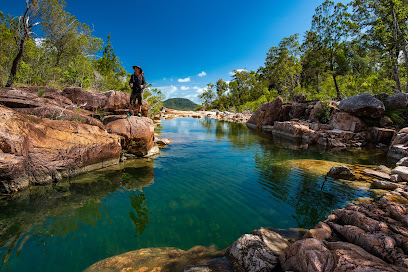
Attie Creek Falls
Discover the breathtaking beauty of Attie Creek Falls, a serene oasis nestled in Cardwell, Queensland, perfect for nature lovers and adventure seekers.
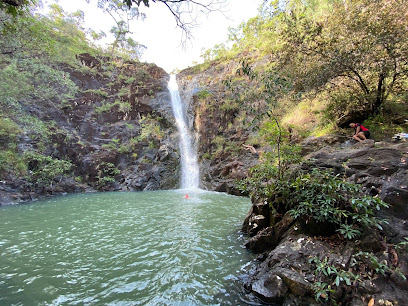
Cardwell Bush Telegraph
Explore Queensland's rich heritage at Cardwell Bush Telegraph, a captivating museum showcasing the region's history and culture.
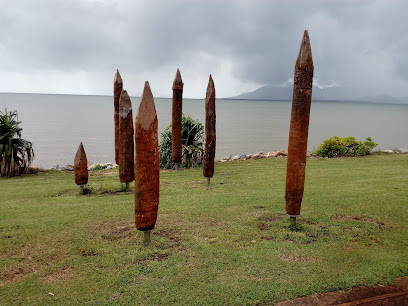
Cardwell Lookout
Experience breathtaking panoramic views and serene surroundings at Cardwell Lookout in Queensland, a must-visit destination for nature lovers.
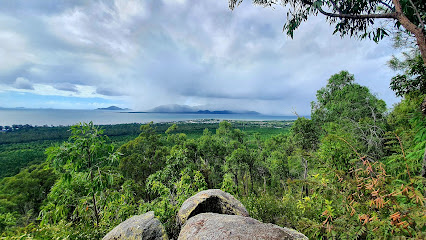
Hinchinbrook Island National Park
Explore the untouched landscapes and diverse wildlife of Hinchinbrook Island National Park, a stunning national park in Queensland, Australia.
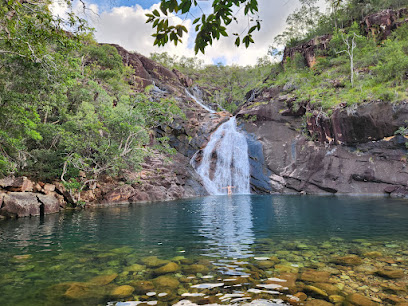
Borello Park
Discover the tranquility of Borello Park in Lucinda, where lush greenery, playgrounds, and scenic paths create an ideal retreat in Queensland.
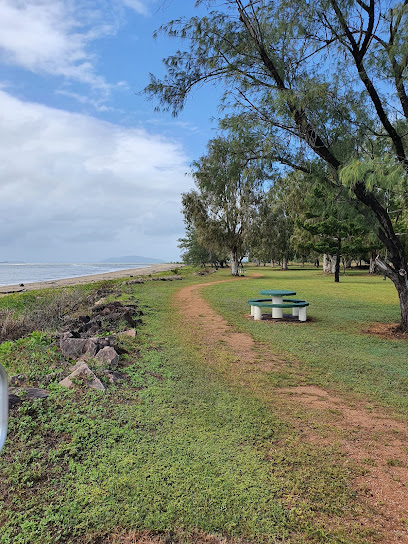
Butterfly Valley
Experience the enchanting tranquility of Butterfly Valley, a perfect blend of self-catering accommodation and stunning nature preserve in Queensland.
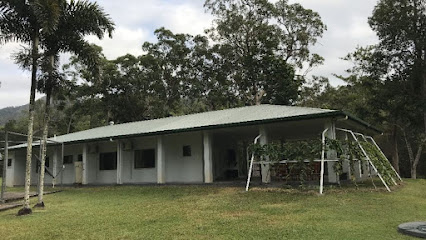
The Big Mud Crab
Explore The Big Mud Crab in Cardwell, Queensland - a unique tourist attraction celebrating local marine life and coastal beauty.
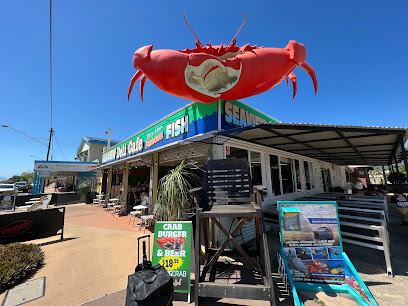
Dungeness
Discover the historical allure of Dungeness in Lucinda, Queensland, where maritime heritage meets stunning coastal views.
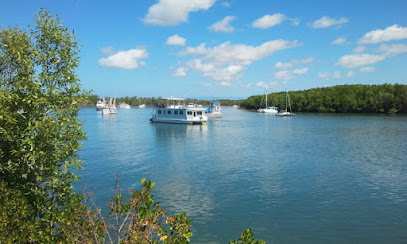
Zoe Falls
Experience the breathtaking beauty of Zoe Falls in Hinchinbrook, Queensland—a serene escape into nature with stunning waterfalls and scenic landscapes.
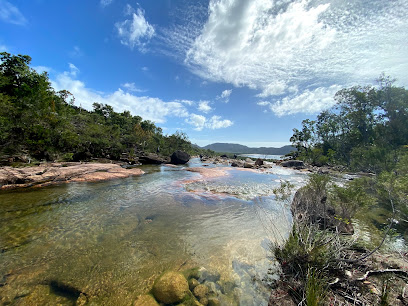
Thorsborne Trail, Hinchinbrook Island National Park
Explore the stunning Thorsborne Trail in Hinchinbrook Island National Park, a hiker's paradise of rainforests, coastlines, and diverse wildlife.
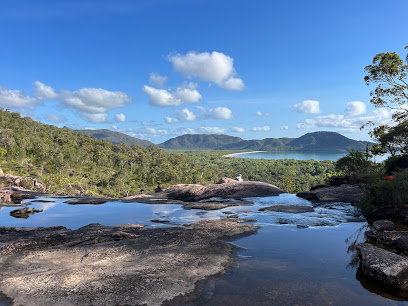
Zoe Bay Campgrounds
Discover the tranquil beauty of Zoe Bay Campgrounds, where nature meets adventure in Queensland's stunning Hinchinbrook National Park.
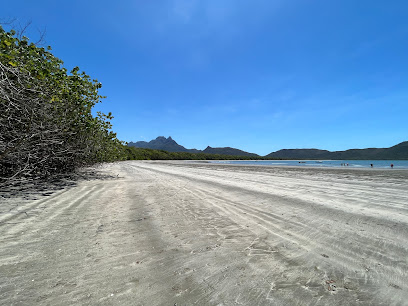
Mulligan Falls
Experience the breathtaking beauty of Mulligan Falls in Hinchinbrook, Queensland, where nature meets tranquility in a stunning waterfall oasis.
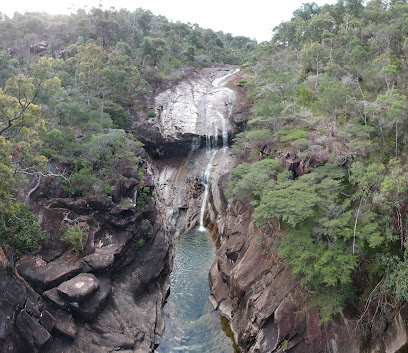
Essential places to dine
Hinchinbrook Lookout
Discover stunning views of Hinchinbrook Island at this scenic lookout in Queensland, perfect for nature lovers and photographers alike.

Lucinda Point Hotel Motel
Discover culinary delights and refreshing beverages at Lucinda Point Hotel Motel - your go-to destination for relaxation in Queensland's coastal paradise.
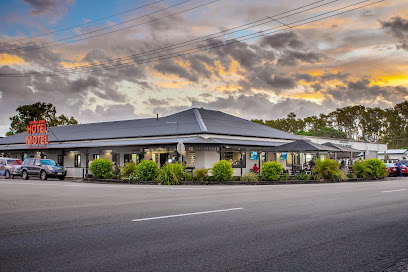
Marine Hotel
Experience stunning coastal views and vibrant pub culture at Marine Hotel in Cardwell - your gateway to relaxation and local flavors.
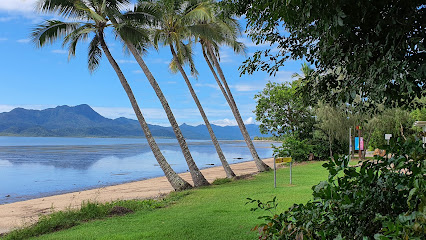
North Shore Tavern, Townsville
Discover North Shore Tavern in Burdell – where great food meets vibrant pub culture in Queensland.
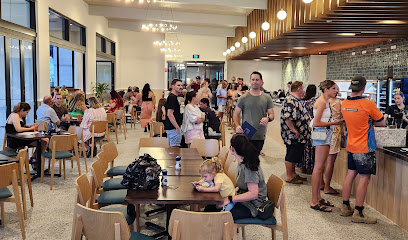
Wild Local
Experience Queensland's freshest seafood and gourmet delights at Wild Local - a culinary treasure in Ingham.
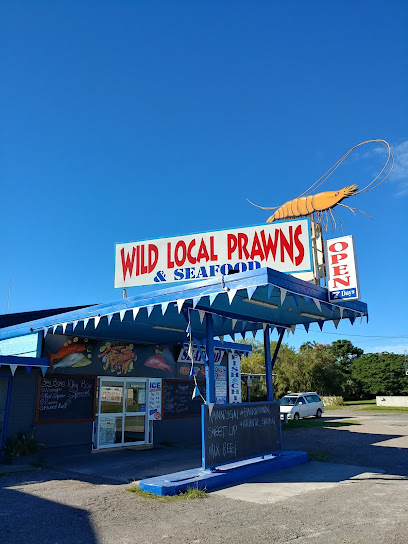
Hotel Hinchinbrook
Discover authentic Australian flavors at Hotel Hinchinbrook in Ingham - where delicious meals meet warm hospitality.
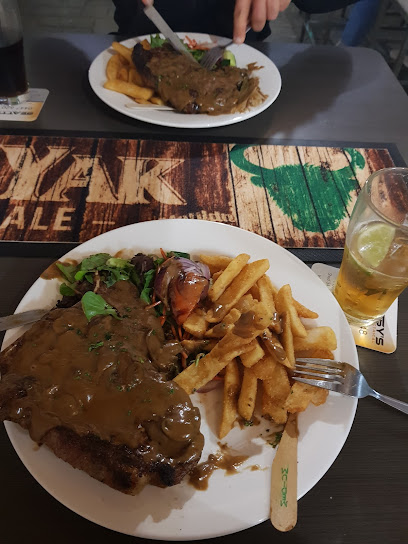
The Grand Hotel Thursday Island
Experience exquisite dining and vibrant nightlife at The Grand Hotel Thursday Island, where local flavors meet warm hospitality in paradise.
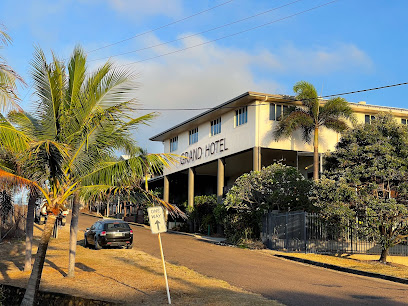
Terry and Mamiko's
Discover delicious fish & chips at Terry and Mamiko's in Cardwell – where fresh flavors meet stunning coastal views!
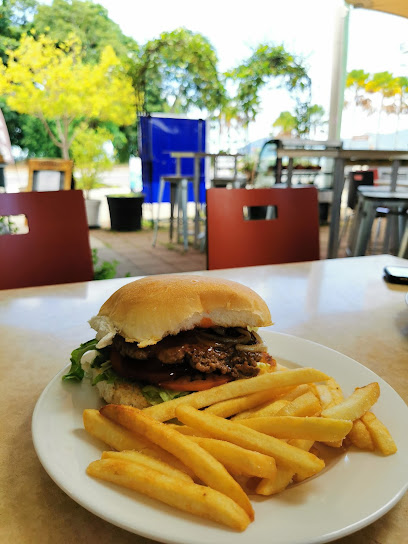
Lees Hotel - the Pub with No Beer
Discover the unique charm of Lees Hotel in Ingham - Australia's beloved 'Pub with No Beer' offering great food and welcoming accommodations.

Cardwell @ the Beach (Lyndock Motel & Bottlemart)
Experience coastal charm at Cardwell @ the Beach – your perfect blend of dining, lodging, and leisure in beautiful Queensland.
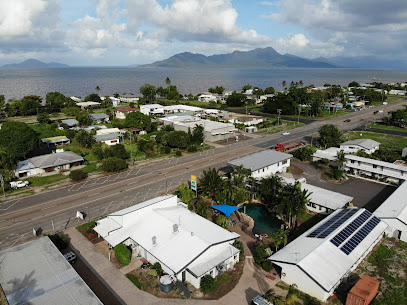
Royal Hotel
Discover the Royal Hotel in Ingham - where great food meets local charm in a vibrant pub atmosphere.

Lucinda Cove Resort
Discover tranquility at Lucinda Cove Resort - where coastal beauty meets comfort in Queensland's stunning landscape.

Hinchinbrook Island Cruises
Experience breathtaking views and wildlife encounters with Hinchinbrook Island Cruises - your gateway to Queensland's stunning natural wonders.
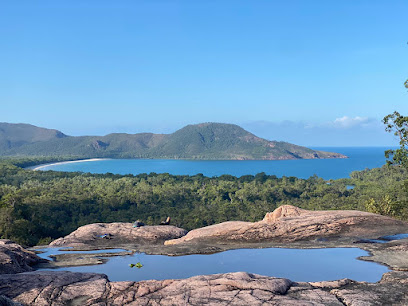
Hinchinbrook Island National Park
Explore Hinchinbrook Island National Park: A pristine wilderness with stunning landscapes and rich biodiversity awaits you in Queensland.
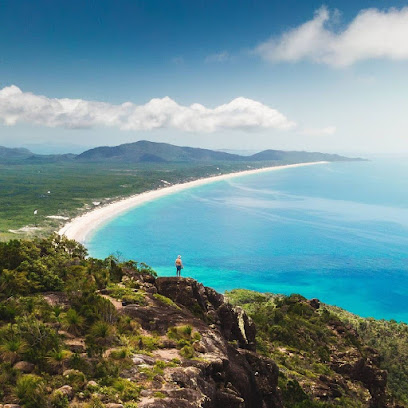
Vista Hinchinbrook
Discover serenity at Vista Hinchinbrook - a charming bed & breakfast surrounded by Queensland's stunning landscapes.

Markets, malls and hidden boutiques
Woolworths Ingham
Discover the convenience of Woolworths Ingham, your local supermarket for fresh produce and unique Australian products in Queensland.
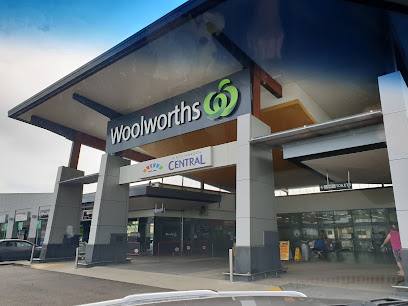
Friendly Grocer Cardwell
Explore the vibrant flavors of Queensland at Friendly Grocer Cardwell, your local supermarket for fresh produce and groceries.

Harvey Norman Ingham
Discover quality electronics, stylish furniture, and home essentials at Harvey Norman Ingham, your convenient shopping destination in Queensland.
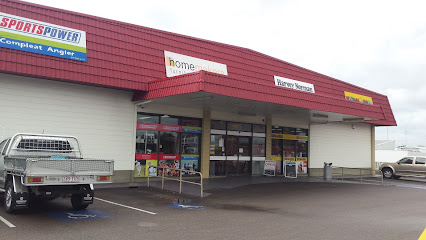
Prices Plus Ingham
Explore Prices Plus Ingham for an extensive selection of goods at fantastic prices, perfect for tourists seeking unique souvenirs and essentials.

Mitre 10 Ingham
Mitre 10 Ingham: A trusted hardware store in Queensland, offering extensive building materials and expert advice for all your DIY projects.

Hinchinbrook Island National Park
Explore the pristine wilderness of Hinchinbrook Island National Park, a natural wonderland of breathtaking landscapes and diverse wildlife in Queensland, Australia.

Lucinda Store
Discover convenience at Lucinda Store, your one-stop shop for essentials, snacks, and local flavors in beautiful Lucinda, Queensland.
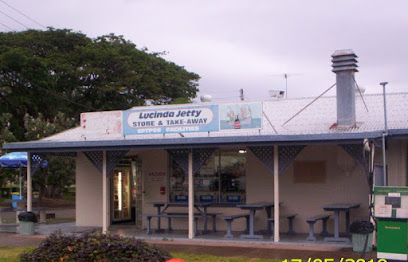
Kmart Ingham K Hub
Discover unbeatable deals and a diverse shopping experience at Kmart Ingham K Hub, your go-to department store in Queensland.
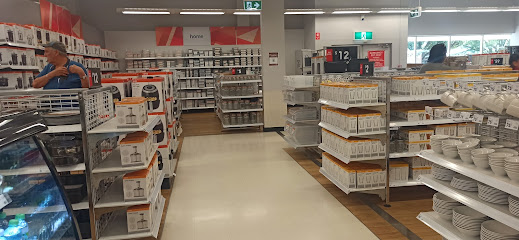
Port Hinchinbrook Marine
Discover adventure at Port Hinchinbrook Marine, your trusted boat repair shop and outboard motor store in beautiful Queensland.
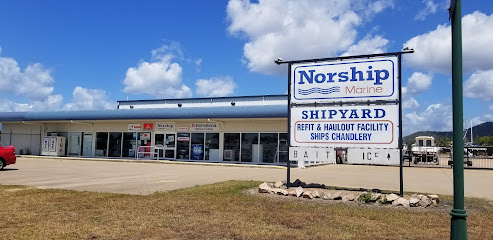
Zoe Falls
Experience the breathtaking beauty of Zoe Falls, a scenic waterfall oasis in Queensland, perfect for nature lovers and adventure seekers.
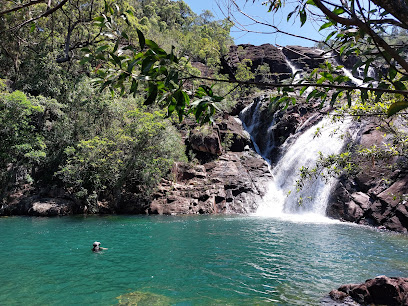
TYTO
Explore TYTO, a cultural and ecological oasis in Ingham, Queensland, featuring art exhibitions, history displays, picnic grounds, and more.

Cardwell Op Shop
Explore the Cardwell Op Shop for unique clothing and accessories while supporting the local community in Queensland.
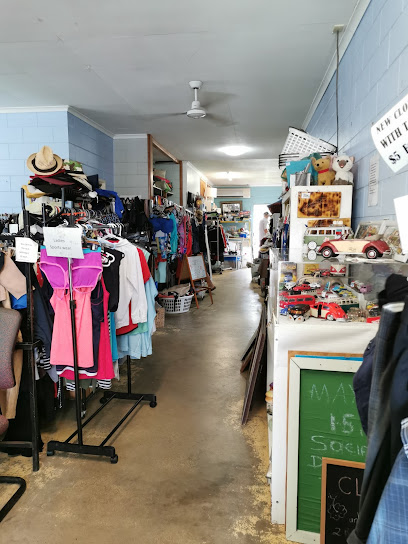
Hinchinbrook Rural Supplies
Explore Hinchinbrook Rural Supplies for all your pet, livestock, and aquarium needs while visiting Ingham, Queensland.
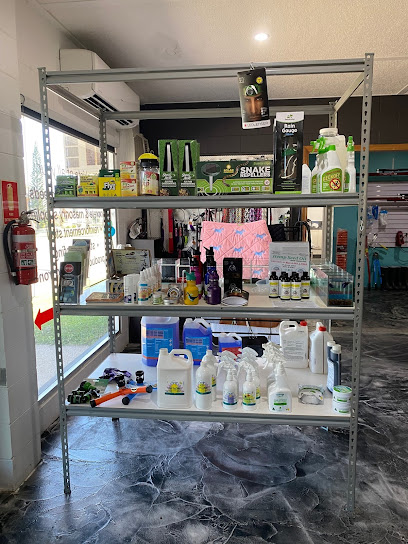
Bossi Boots
Explore Bossi Boots in Ingham for stylish footwear that merges comfort and local charm, perfect for every occasion in Queensland.
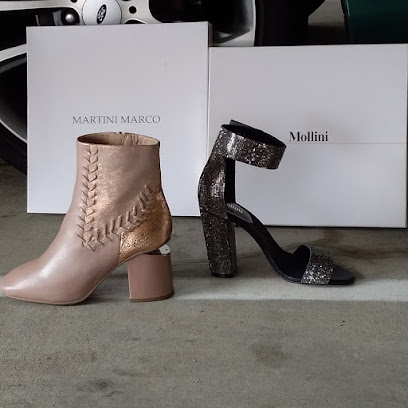
Salvation Army Family Store Ingham
Explore unique finds and support local causes at the Salvation Army Family Store Ingham, where every purchase makes a difference.
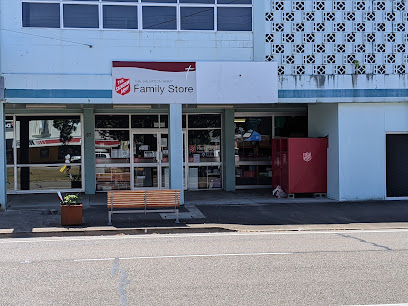
Essential bars & hidden hideouts
Three Wolves
Experience the vibrant nightlife at Three Wolves, Cairns' premier cocktail bar, offering exquisite drinks and a lively atmosphere.
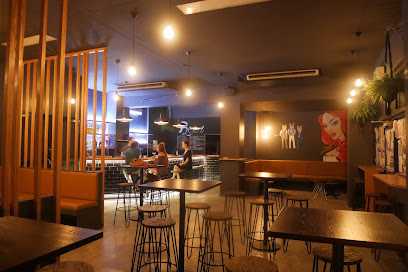
Lucinda Point Hotel Motel
Discover the perfect blend of comfort and local charm at Lucinda Point Hotel Motel, your gateway to the stunning Queensland coast.
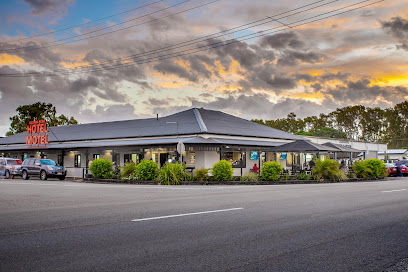
Marine Hotel
Experience the vibrant atmosphere and stunning views at the Marine Hotel, a premier pub and bar in Cardwell, Queensland.
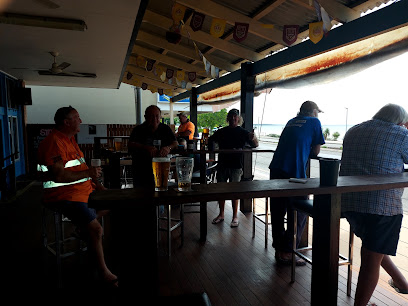
North Shore Tavern, Townsville
Discover the lively atmosphere and delicious cuisine at North Shore Tavern, Townsville's premier pub and restaurant for a true local experience.
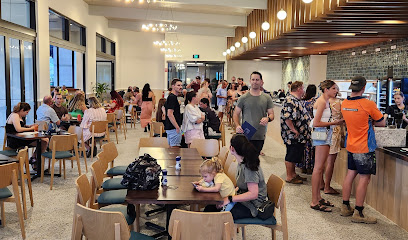
Matso's Sunshine Coast Brewery
Discover Matso's Sunshine Coast Brewery: Eumundi's premier destination for craft beer, gourmet food, and live music in a vibrant coastal atmosphere.
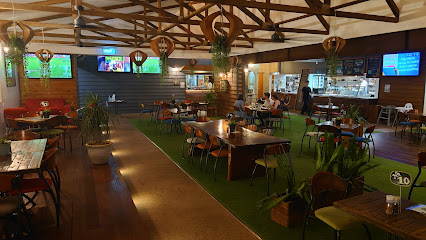
Hotel Hinchinbrook
Discover the flavors of Australia at Hotel Hinchinbrook, a delightful grill restaurant in Ingham, Queensland, where great food meets warm hospitality.
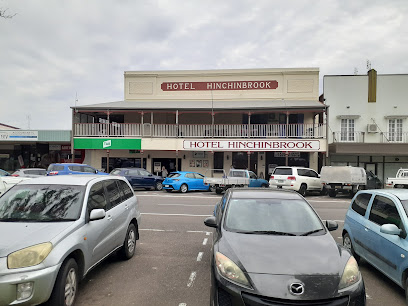
Santé Cocktail Bar
Discover Santé Cocktail Bar in Toowoomba City, a cocktail lover's paradise offering a unique menu and a vibrant atmosphere.
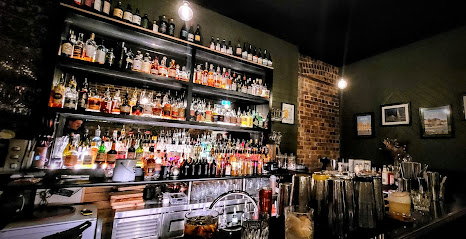
Lees Hotel - the Pub with No Beer
Discover authentic Australian hospitality at Lees Hotel, the unique Pub with No Beer in Ingham, Queensland.

Hooch and Fellow
Discover Hooch and Fellow, the vibrant bar in Townsville City, offering a dynamic atmosphere and a diverse selection of quality drinks.
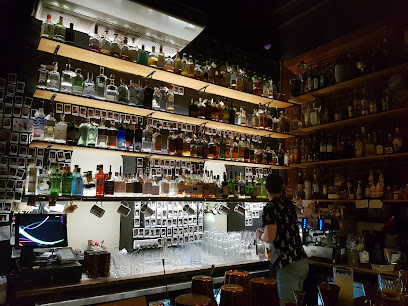
Channel Inn Bar and Bistro
Discover the flavors of Queensland at Channel Inn Bar and Bistro, where local ingredients meet stunning views in a cozy atmosphere.
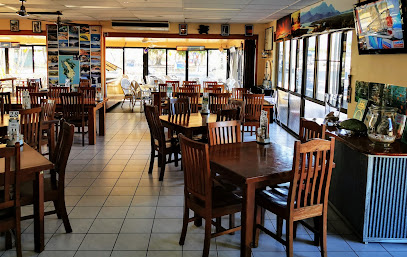
Lucinda Cove Resort
Discover the beauty of Queensland at Lucinda Cove Resort, where relaxation meets adventure in a stunning coastal setting.

Original North Australian Bar & Grill
Experience the essence of Australian cuisine with a vibrant atmosphere at the Original North Australian Bar & Grill in Bowen.
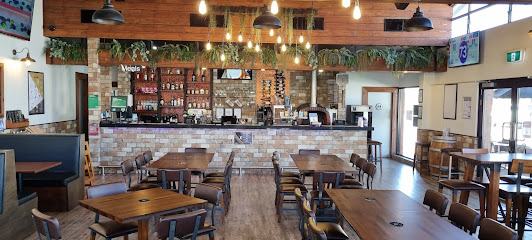
Hinchinbrook Island National Park
Explore the diverse ecosystems and breathtaking landscapes of Hinchinbrook Island National Park, a hidden gem in Queensland, Australia.
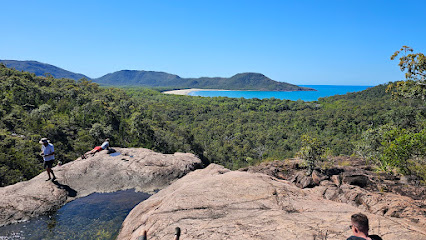
Vista Hinchinbrook
Discover tranquility and breathtaking views at Vista Hinchinbrook, a perfect bed & breakfast getaway in Queensland's lush rainforest.

Thorsborne Trail, Hinchinbrook Island National Park
Discover the natural wonders of Thorsborne Trail on Hinchinbrook Island, a spectacular hiking destination rich in biodiversity and stunning landscapes.
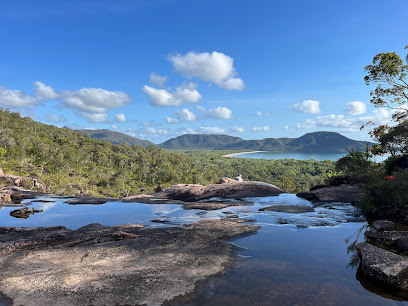
Local Phrases about Hinchinbrook Island
-
- HelloG'day
[G'day] - GoodbyeSee ya
[See ya] - YesYeah
[Yeah] - NoNah
[Nah] - Please/You're welcomeNo worries
[No worries] - Thank youCheers
[Cheers] - Excuse me/SorrySorry mate
[Sorry mate] - How are you?How ya goin'?
[How ya goin'?] - Fine. And you?Good thanks. You?
[Good thanks. You?] - Do you speak English?Speak English?
[Speak English?] - I don't understandNo idea mate
[No idea mate]
- HelloG'day
-
- I'd like to see the menu, pleaseMenu, thanks
[Menu, thanks] - I don't eat meatNo meat for me
[No meat for me] - Cheers!Cheers mate!
[Cheers mate!] - I would like to pay, pleasePay now, thanks
[Pay now, thanks]
- I'd like to see the menu, pleaseMenu, thanks
-
- Help!Help!
[Help!] - Go away!Piss off!
[Piss off!] - Call the Police!Police!
[Police!] - Call a doctor!Doctor!
[Doctor!] - I'm lostLost mate
[Lost mate] - I'm illSick mate
[Sick mate]
- Help!Help!
-
- I'd like to buy...I'll grab...
[I'll grab...] - I'm just lookingJust browsing
[Just browsing] - How much is it?How much?
[How much?] - That's too expensiveToo dear mate
[Too dear mate] - Can you lower the price?Can you do a deal?
[Can you do a deal?]
- I'd like to buy...I'll grab...
-
- What time is it?What's the time?
[What's the time?] - It's one o'clockIt's one
[It's one] - Half past (10)Half ten
[Half ten] - MorningMornin'
[Mornin'] - AfternoonArvo
[Arvo] - EveningEvenin'
[Evenin'] - YesterdayYesty
[Yesty] - TodayToday
[Today] - TomorrowTomorra
[Tomorra] - 1One
[One] - 2Two
[Two] - 3Three
[Three] - 4Four
[Four] - 5Five
[Five] - 6Six
[Six] - 7Seven
[Seven] - 8Eight
[Eight] - 9Nine
[Nine] - 10Ten
[Ten]
- What time is it?What's the time?
-
- Where's a/the...?Where's the...?
[Where's the...?] - What's the address?Address?
[Address?] - Can you show me (on the map)?Show me
[Show me] - When's the next (bus)?Next bus?
[Next bus?] - A ticket (to ....)Ticket to...
[Ticket to...]
- Where's a/the...?Where's the...?
History of Hinchinbrook Island
-
Prior to European settlement, Hinchinbrook Island was home to the Bandjin and Girramay people. They have a deep spiritual connection to the land and sea, with a rich cultural heritage that includes traditional hunting, fishing, and gathering practices. The island's rugged terrain and abundant resources provided sustenance and spiritual fulfillment for these Indigenous communities for thousands of years.
-
Hinchinbrook Island was first sighted by Europeans in 1770 during Captain James Cook's voyage along the eastern coast of Australia. Cook noted the island's imposing presence and natural beauty, naming it after John Montagu, the 4th Earl of Sandwich and First Lord of the Admiralty. Subsequent European exploration in the 19th century further mapped and documented the island's unique geography and biodiversity.
-
In the late 19th century, Hinchinbrook Island saw the arrival of European settlers. The island's challenging terrain and isolation made large-scale settlement difficult, but small communities emerged, focusing on timber logging and agriculture. Despite these efforts, the island remained largely undeveloped, preserving much of its natural environment.
-
Recognizing the ecological significance and natural beauty of Hinchinbrook Island, it was declared a National Park in 1932. This designation aimed to protect the island's unique ecosystems, including its mangrove forests, rainforests, and coral reefs. The National Park status has helped to preserve the island's pristine condition, making it a haven for wildlife and a popular destination for eco-tourists.
-
In recent decades, Hinchinbrook Island has become renowned for its ecotourism opportunities. The island's pristine beaches, lush rainforests, and diverse marine life attract visitors from around the world. Conservation efforts have been paramount in maintaining the island's natural beauty, with strict regulations in place to minimize human impact and promote sustainable tourism practices.
-
In recent years, there has been a resurgence in recognizing and honoring the cultural heritage of the Bandjin and Girramay people. Initiatives have been launched to incorporate Indigenous knowledge and practices into conservation efforts, as well as to educate visitors about the island's rich Aboriginal history. These efforts aim to foster a deeper understanding and respect for the island's original inhabitants and their enduring connection to the land.
Hinchinbrook Island Essentials
-
Hinchinbrook Island is located off the coast of Queensland, Australia. The nearest access point is Cardwell, a small town about halfway between Cairns and Townsville. From Cardwell, you can take a ferry, water taxi, or private boat to the island. The ferry service is the most common and typically takes around 45 minutes. For those flying, the nearest major airports are Cairns and Townsville, both of which are approximately 2-2.5 hours' drive from Cardwell.
-
Hinchinbrook Island has no roads or vehicles, so transportation on the island is primarily by foot or boat. There are numerous hiking trails, with the Thorsborne Trail being the most famous, offering a 32km trek through diverse landscapes. For those looking to explore the waters, kayaks and canoes are available for hire. Ensure to book any water transportation in advance, especially during peak seasons.
-
The official currency in Australia is the Australian Dollar (AUD). Since Hinchinbrook Island is a national park with limited facilities, it's crucial to carry sufficient cash. However, for bookings and services in Cardwell or other mainland points, credit and debit cards are widely accepted. ATMs are available in Cardwell, but it's wise to carry enough cash before heading to the island.
-
Hinchinbrook Island is generally safe, but it's important to take precautions. Always inform someone of your hiking plans and expected return time. Be cautious of wildlife, including crocodiles in the water and snakes on land. There are no high-crime areas targeting tourists on the island, but always keep your belongings secure and be aware of your surroundings. Avoid swimming in estuaries and creeks due to the presence of crocodiles.
-
In case of an emergency, contact local authorities immediately. Dial 000 for emergency services in Australia. There are no medical facilities on Hinchinbrook Island, so ensure you have a first-aid kit and any necessary medications. It is crucial to have travel insurance that covers medical emergencies and evacuation. For minor issues, the nearest medical facilities are in Cardwell.
-
Fashion: Do wear comfortable and weather-appropriate clothing, including good hiking boots and sun protection. Avoid wearing flashy or heavy clothing. Religion: The island does not have religious sites, but respect the natural environment as it holds cultural significance for the Indigenous people. Public Transport: There is no public transport on the island, but do be respectful of other hikers and boat users. Greetings: A friendly nod or hello is common when passing fellow hikers. Eating & Drinking: Do pack out all trash and food waste. Don't feed wildlife, as it disrupts their natural habits.
-
To experience Hinchinbrook Island like a local, make sure to explore less-traveled trails and hidden beaches. Engage with park rangers and local guides who can offer valuable insights into the island's ecology and history. Try fishing in designated areas and cooking your catch over a campfire for an authentic experience. Always adhere to 'Leave No Trace' principles to preserve the island's pristine condition.
Trending Landmarks in Hinchinbrook Island
-
Cardwell Jetty
-
Hinchinbrook Lookout
-
Hinchinbrook Visitor Information Centre
-
Girringun National Park
-
Tully Gorge National Park
-
Absolute North Charters
-
Hinchinbrook Island Cruises
-
Djiru National Park
-
Wild Hinchinbrook Adventures
-
McClellands Lookout
-
Hinchinbrook Island National Park
-
Zoe Falls
-
Thorsborne Trail, Hinchinbrook Island National Park
-
Mulligan Falls
-
Goold Island National Park
Nearby Cities to Hinchinbrook Island
-
Things To Do in Port Douglas
-
Things To Do in Airlie Beach
-
Things To Do in The Whitsundays
-
Things To Do in Port Moresby
-
Things To Do in Alotau
-
Things To Do in Noosa
-
Things To Do in Brisbane
-
Things To Do in Surfers Paradise
-
Things To Do in Gold Coast
-
Things To Do in Lae
-
Things To Do in Buka
-
Things To Do in Byron Bay
-
Things To Do in Goroka
-
Things To Do in Mount Hagen
-
Things To Do in Alice Springs

